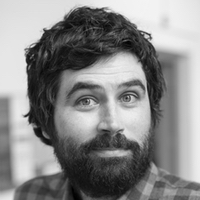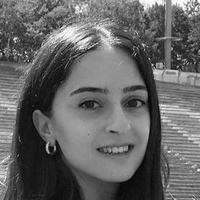About
- Responsible staff
- Questions related to the content of the course?
- Contact hours
- Coronavirus and the course
- Education methods
- Marking
- Exams
- Expected prior knowledge
- Course Content
- Study Goals
Responsible staff
Questions related to the content of the course?
Please do not email us for questions, we want everyone to benefit from the answers we provide, and we encourage students to also answer questions.
For all questions related to the content, please use discord (geomatics server, #geo1015).
Only use email for personal issues.
Contact hours
During the Q2:
- Wednesdays 8:45-10:30
- Fridays 8:45-10:30
- help with coding/assignments (with Özge Tufan): Tuesdays 13:45-15:30 in the Geolab (BK.02.OOST.600)

Coronavirus and the course
If you have any symptoms do not come to BK-City. Exam day? We will arrange something, no worries. All lectures will be recorded and put on the YouTube, so you will not miss anything.
I would appreciate if you wore a mask during the lectures. If you come speak to me closely, please wear one.
Education methods
This is a blended-learning course. The contact hours are there to answer questions, to help with the assignments, give feedback on the assignments, and we will sometimes explain topics that are less understood. We will also have one guest lecture from a practitioner; these are not part of the material for the exam, they are just there to present what is done in practice.
The contact hours are not mandatory (except the one during week 2.5 when there is a mid-term exam (15% final mark)) but they certainly will help in understanding the concepts.
The lectures are replaced by videos and reading that you need to do individually at home before the contact hours.
Marking
| final exam | 35% |
| mid-term exam | 15% |
| 3 assignments (15+15+20) | 50% |
- a total of 57.5% or above is necessary to successfully pass the course;
- there are 2 exams: one mid-term and one final
- a minimum of 50% for the combined exams (mid-term + final) is necessary;
- there is one resit for the exams (thus one exam worth 50% during the resit period (Q3));
- there is one “resit” for all the assignments, if you failed some parts you need to redo all three of them;
- if you still fail after the resits, then you have to redo the whole course the following year.
Exams
- mid-term exam (15%) on 2021-12-10@8:45-10:00 in room BK-B
- final exam (35%) on 2022-01-28@9:00-12:00 in room 3mE-IZ H
Both exams are in-person (unless this changes because of the corona cases) and are open-book: you can bring any (paper) books and/or paper notes you want, but electronic devices are not allowed (except a simple calculator).
Expected prior knowledge
The course is designed for students from the MSc Geomatics, and the following courses are required prerequisites:
- GEO1000, or knowledge of a programming language, eg Matlab, Java or Python (C++ is mandatory for some of the assignments)
- GEO1001
- GEO1002
Course Content
Digital terrain models (terrains) are computer representations of the elevation of a given area, and they play an important role in understanding and analysing our built environment. They are the necessary input for several applications (eg flood modelling, visibility, effects of climate change on the north poles, etc.), and they are also relevant for studying for seabed and other planets.
The course provides an overview of the fundamentals of digital terrain modelling (DTM):
- different representations of terrains: TINs, rasters, point clouds, contour lines
- reconstruction of terrains from different sources (LiDAR, photogrammetry, InSAR)
- spatial interpolation methods
- conversion between different DTM representations
- processing of DTM: outlier detection, filtering, segmentation, and identification and classification of objects
- applications, eg runoff modelling, watersheds computations, visibility
- techniques to handle and process massive datasets
The course has both a theoretical part and a practical part where students reconstruct, manipulate, process, and extract information from terrains.
All the labs are programming tasks (to be done with the Python and C++ programming languages), and other open-source libraries and software are used.
Study Goals
At the end of the course, students will be able to:
- describe the characteristics of elevations datasets from different sources (LiDAR, photogrammetry, InSAR)
- describe the pros and cons of different representations of terrains, and compare them for different applications
- explain how elevation datasets can be automatically converted to terrains
- reconstruct and manipulate terrains using with open-source libraries
- explain, analyse, and discuss how terrains can be useful in different applications related to built environment
- given a specific problem where elevation plays a role (eg visibility or flood modelling), analyse and identify which data and algorithms are needed to solve the problem, and assess the consequences of these choices;



